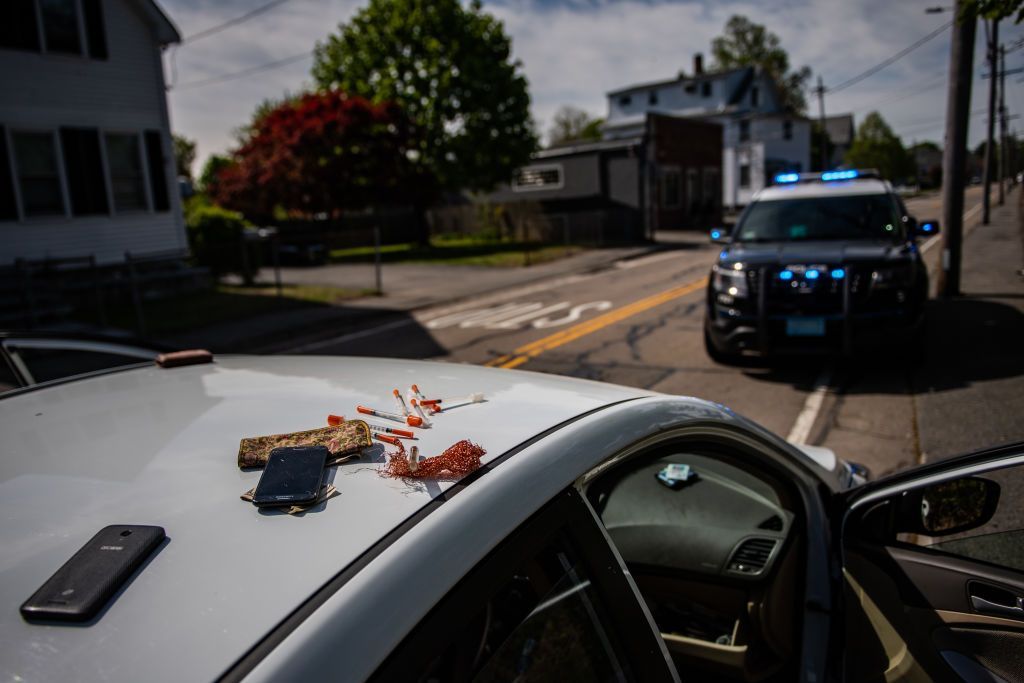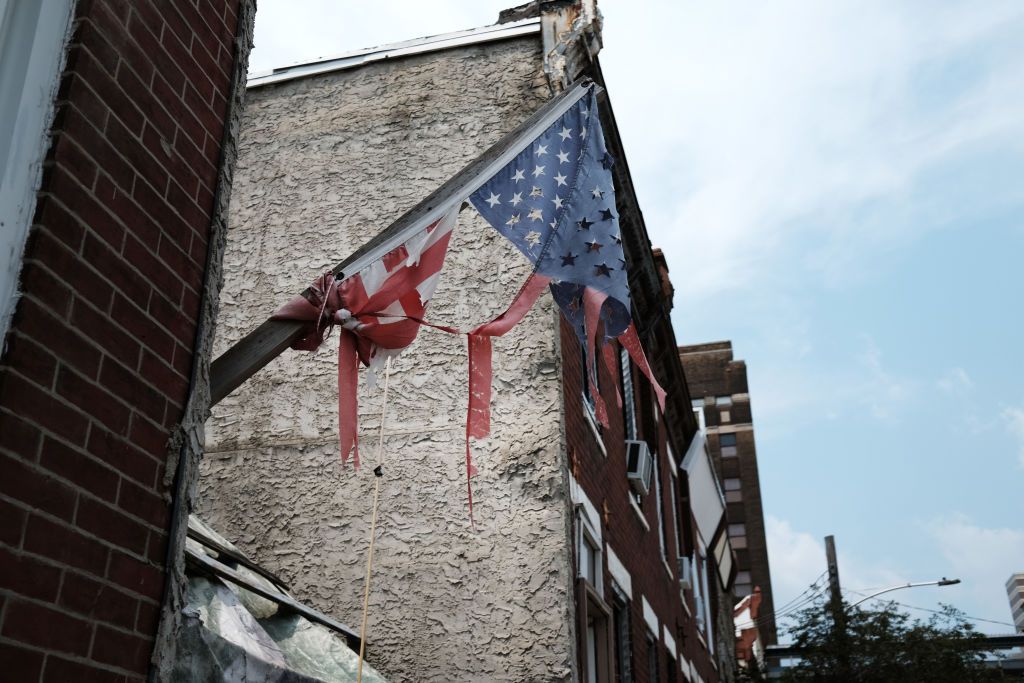The Good Addict/Bad Addict Myth
Prejudiced narratives about the U.S. drug epidemic and the devastation they cause

Today Brendan Little, the former Policy Director for Boston’s Office of Recovery Services, writes on the way we talk about “good addicts,” who are largely white and middle- or upperclass, and “bad addicts,” who are largely poorer or people of color. The former are afforded a degree of compassion and understanding the latter rarely get. In this framing, the suffering of the “good addict” is a burden externally placed upon them, while the “bad addicts” are considered inherently deviant and criminal, their shortcomings a matter of personal moral failing.
As with any such discrepancy in the way we treat people based on class and color lines in America, the solution isn’t for everyone to suffer under the boot of the carceral system through equally draconian measures, it’s the idea that, perhaps, we might save some of our empathy and grace for everyone.
I would very much appreciate it if you helped me pay our great contributors like Little today and Ryan Ross who wrote for Hell World the other day on the lack of space for the unhoused to recover when sick or injured and the need for medical respite shelters around the country.
“It’s not the getting sick that imperils the homeless it’s the inability to get better,” he explained.
Speaking of addiction, the Small Bow has “a good one” out today. Good because it’s the one I wrote for them a couple years back. If you’re unfamiliar with the Small Bow here’s what I said about it to New York Magazine:
“I’m not in recovery, although as someone who has lived through, and lives with, whatever-you-got in terms of addictions, I find A.J. Daulerio’s The Small Bow to be an extraordinarily great resource that also happens to be beautifully written. Kind of like reading ahead on the syllabus for a test I’m going to have to take later on in the semester.”
Many of you will have read this piece of mine What It’s Like Over Here, What’s It Like Over There? when it came out, or in my book, but it hasn’t had a permanent home online for a while and now it does.
Sometimes I talk to my friends who are sober the same way you would when someone has just gotten back from a vacation to somewhere cool you’ve always wanted to go. Oh wow what was Japan like? And they tell you how great it is and you say you definitely are going to go someday but you know you probably won’t but you say it anyway.
Sadly, and much to my shame, I have not managed to “get my shit together” since then. Last night I had a few beers and wrote an email to the host of the Boston sports talk radio station I listen to and get mad at every day for fuck’s sake.
There’s always tomorrow I suppose.

The Good Addict/Bad Addict Myth
by Brendan Little
Public health researchers and economists have proven a link between reckless opioid overprescribing and the astronomical rise of overdose deaths in the United States. A recent CDC report shows that drug overdose deaths in the U.S. have reached an all-time high – more than 100,000 in one year. Three quarters of these overdose deaths were caused by illicit fentanyl and its analogues. Fentanyl, a synthetic opioid 50-100 times stronger than morphine, now comprises the majority of what’s commonly referred to as “street heroin.”
The prescription opioid use to illicit opioid use pipeline is real and shouldn’t be dismissed. But the popular narrative of this specific trajectory has been mythologized and distorted by the media, law enforcement, and policymakers to delineate “good” drug users and “bad” drug users. Unsurprisingly, this categorization falls along predictably prejudiced lines. According to the myth, the “good” are often white, middle or upper class, and live in suburbs. They are not inherently “addicts” but are innocently led to their drug use through the overprescribing of opioids by societal and market forces beyond their control. The “bad” are most often Black, brown, or poor and live in cities. They are drug users who start with illicit drugs and are therefore considered inherently criminal “addicts.” The “good addict/bad addict” narrative is not only erroneous and discriminatory, it is also the continuation of a long history of misleading mythmaking in the U.S. that has resulted in punitive drug policies that disproportionally hurt Black, brown, and poor people.
I have personally witnessed the “good addict/bad addict” paradigm play out throughout my life. In addition to my own lived experience with poverty, homelessness, and addiction, I also worked twelve years serving high-risk populations for the City of Boston, including five years as Policy Director for the Mayor’s Office of Recovery Services. In more recent years, as the opioid epidemic worsened, I would increasingly hear people talk about how today’s drug users come from “good families” and are “not the typical addict.” I can’t tell you how many times I heard about the sports injuries and surgeries that led people to OxyContin and eventually to injecting fentanyl. This all sounded like thinly veiled attempts to retain a fantasy of white, middle class innocence. The people talking this way were almost always middle-class white people. I heard it most often from law enforcement.
Every time I heard this innocence trope parroted back to me, I’d think about how my own addiction was criminalized and shamed. I’d also think about the high-risk youth that I served for years at the City of Boston, almost all of whom were Black and brown. They received far worse treatment than I did as a white court-involved youth. The kids I worked with, despite facing a staggering amount of trauma and adversity, were never afforded the compassion and leniency that suburban white drug users were. Instead they were often incarcerated for the same crimes white youth would be diverted for.
What’s at the heart of the “good addict/bad addict” myth? And why the incessant need to create a caste system of drug users based on the substance that they use?
When we start asking questions like these, we get to a painful truth about drug use in the US, which is that our social systems create stark inequities for poor people and people of color, and those inequities cause severe adversity and pain. Addiction expert Dr. Gabor Mate often says, “the question is not why the addiction, but why the pain?” It’s a lot harder for people to sit with this question because it requires grappling with larger injustices, which may render us all complicit. It’s more desirable then to avoid this difficult work and blame “bad addict” behavior on individual moral failings. Another addiction expert, Maia Szalavitz, writes of this tendency in her book Unbroken Brain:
[A]ddiction is not simply a result of exposure to a drug…The critical risk factors for addiction are child trauma, mental illness, and economic factors like unemployment and poverty. The ‘innocent victim’ narrative focuses on individual choice and ignores these factors, along with the dysfunctional nature of the entire system that determines a drug’s legal status.
The creation of an American caste system, based upon select populations using specific drugs, is not new. The tragedy of the crack epidemic is a prime example. In Crack in America, Craig Reinarman and Harry Levine write that by 1985 “more than twenty-two million Americans in all social classes and occupations reported at least trying cocaine.” The authors note that, even though people from all backgrounds were smoking cocaine and crack, crack only “attracted the attention of politicians and the media because of its downward mobility to and increased visibility in the ghettos and barrios.” They further describe how this disparity was reinforced by the media. By 1986, “dramatic footage of black and Latino men being carted off in chains, or of police breaking down crackhouse doors, became a near nightly news event.” Despite crack being the same substance as cocaine, only in a different physical form, federal criminal penalties treated 1 gram of crack as equal to 100 grams of cocaine until 2010. This caused a generation of Black and brown people to be disproportionately penalized and disenfranchised.
The punitive response to the crack epidemic is lightyears away from the compassionate, public health approach that emerged with the prescription opioid epidemic. When white middle class users became the face of opioid addiction, attitudes towards addiction changed. Across the US, more lenient drug courts and diversion programs sprang up; prescription drug drop-off programs were set up at police stations; and police and fire departments started carrying Narcan, a drug that reverses opioid overdoses. The media response was also more compassionate. A 2017 content analysis of 100 popular press articles about the opioid epidemic notes the imbalance of media accounts about white victims of fatal overdose versus victims of color:
Generally accompanied by a picture of the lost loved one, these accounts often go into great depth about the person's life: what s/he did in school, who his/her friends were, what s/he hoped to do in the future, what hobbies s/he enjoyed. We found no stories of overdose deaths in black and Latino communities, although we know overdose happens in those communities as well. Rather, as noted above, we found arrest stories.
In the same way the crack epidemic’s distorted narrative had devastating effects on Black and brown people, our current opioid epidemic is doubling down on that devastation. While the prescription opioid craze didn’t affect large amounts of Black Americans – because their pain was, and still is, chronically underdiagnosed and under-prescribed – the illicit fentanyl epidemic is rapidly worsening for Black and brown people. A recent study of four U.S. states found that, between 2018-2019, opioid deaths for Black people increased 38%.
And when Black people are not excluded from treatment by being disproportionately incarcerated (They are 6-10 times more likely to be sent to jail for drug offenses despite using drugs at the same rate as white people), they still face barriers accessing treatment. Racial disparities have recently been captured in the prescribing of medications that treat opioid use disorder (OUD). The two most common medications for OUD are methadone, which is heavily regulated by the DEA and is distributed at clinics that require extensive program engagement, and buprenorphine, which is simply prescribed by a doctor. You might not be surprised to hear that Black people have a harder time accessing buprenorphine. A 2021 study of this prescribing disparity notes, “Some patients even describe methadone as liquid shackles, while those transitioned from methadone to buprenorphine express feeling ‘freed’ and ‘normal again.’ This research shows that the medicalization of OUD is tiered along racial lines.”
Now that opioid prescriptions are dwindling (down more than 44% in the last decade), and the faces of the opioid epidemic are increasingly resembling Black and brown people, it will be interesting to see what happens to the “good addict/bad addict” myth, and if the newly adopted compassionate approach to addiction will hold. Unfortunately, history shows us that it does not look promising.
Over the years, I’ve heard “addiction doesn’t discriminate” more times than I can count. The problem is people do discriminate – especially people in positions of power within our social structures. They often benefit when a certain story is told a certain way. Why not blame the people they always have – the Black, brown, and poor people who chronically bear the brunt of our country’s cruelty and cowardice? Why not position them as more addicted, more depraved, and less innocent, less worthy of compassion?
When I entered recovery for my own addiction, I had to truly grapple with my emotional pain for the first time in years. I couldn’t numb-out or hide from it anymore. The United States would be a better place if our institutions could harness a sliver of the self-examination and reckoning that the average recovering person engages in each day. Truly exploring the pain behind addiction in the U.S. will break down the false “good addict/bad addict” binary in our country in a way that simply stratifying and vilifying how people numb that pain never will.
Brendan Little is the former Policy Director for Boston's Office of Recovery Services. Find him on Twitter here.
Wait before you go! Natalie Shure has a good piece in the New Republic today about the Democrats misleading touting of the Build Back Better Act capping the price of insulin. In fact what it does is cap insurance co-pays.
Many of the law’s most ardent cheerleaders have zeroed in on a provision related to a drug whose price has been repeatedly tied to high-profile deaths: “The Build Back Better Act will cap out-of-pocket insulin costs at $35 a month. Thinking of Alec Smith, a Minnesota restaurant manager who tragically passed away because he couldn’t afford the cost of his insulin. This insulin cap is for him and so many others,” tweeted Representative Ilhan Omar. “House Democrats just passed a cap on the price of insulin at $35 a month—and now it’s time for the Senate to get it done,” Senator Ron Wyden blogged at Data for Progress. Even President Biden praised the measure for ensuring “that no one pays more than $35 a month for their insulin.” Dozens more lawmakers echoed these sentiments.
There’s just one problem with this exciting claim about insulin: It isn’t true. Capping the price of insulin would indeed be a seismic achievement, one that diabetes patients have spent years fighting for through grassroots organizing and nonprofit initiatives like T1 International’s #insulin4all campaign. Unfortunately, what’s actually included in the legislation isn’t a price cap at all but rather an insurance copay cap. The deceptively significant difference between the two says everything about how we wound up with a deadly insulin pricing crisis to begin with, and what it will take to stop it.
I wrote about the man Omar mentioned, Alec Smith, in this Hell World here.
You have probably heard about Alec Smith. Bernie Sanders among many others have often mentioned him as a glaring example of our nightmare for-profit health care system. Smith was a Minnesota man who died at the age of twenty six in 2017 a few weeks after he had started rationing his insulin because he couldn’t afford a refill. He had recently aged off of his parents health insurance and despite having a full time job the restaurant where he worked did not provide him with his own.
As his mother wrote after his death: “For Alec, this meant that his insulin and supplies cost almost $1,300 a month. He and I together researched for months in advance about his health insurance options. They weren’t good. The best plan we found would cost him $450 a month for the premium with a whopping $7,600 deductible. That deductible meant he would be paying out-of-pocket for his medicine for many months anyway, so he decided to go without the plan until he could find a different job with benefits.”
A few weeks later he was found dead alone in his apartment in Minneapolis.
Prior to that I wrote about the similar tragic passing of a man named Shane Patrick Boyle.
Shane Patrick Boyle lost his mother in March of 2017. You’ve heard this story before, or at least one like it, but you should listen again. It’s about Boyle but it’s also about the rest of us.
About a month earlier, the well-liked Boyle, founder of Zine Fest Houston, had moved to Arkansas to care for his ailing mother, and in the process lost an arrangement he had with a local clinic at home in Texas to get the medication he needed to live at cost. So he did what has become natural to many of us in times of medical need today: He set up a GoFundMe.
For weeks, according to Ted Closson, a comic book artist and friend of Boyle’s, the campaign languished just short of its $750 goal by $50. A few days later, Boyle died of complications from type 1 diabetes.
As Shure writes: These “are problems that insulin copay caps can’t solve. Of the known patients who died of insulin rationing over the past several years, most didn’t have insurance at all.”
Wait again! Here’s a good one from Scott Hechinger in The Nation this week as well.
“We often read about outlier crimes—the individual who committed a crime while out on bail—yet never about the far more common reality of the tens of thousands who haven’t been caged pre-trial and thrive in their freedom because of bail reform,” he writes. “These choices shape the public’s intuitions about the criminal legal system and, consequently, drive policy.”
“Every time there is a ‘rise in homicides,’ instead of journalists using the occasion to question the efficacy of policing, police are allowed to use their failures to demand more resources, more funding, more support.”
